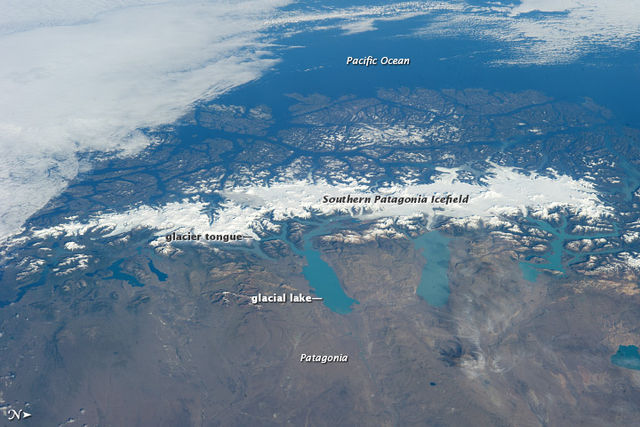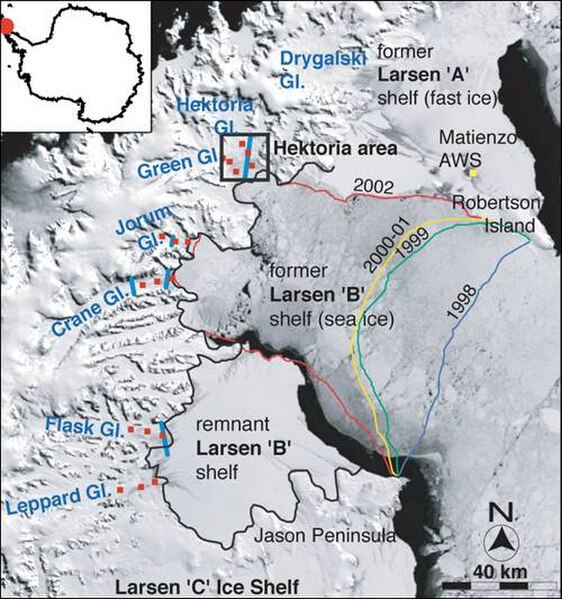Glacier morphology, or the form a glacier takes, is influenced by temperature, precipitation, topography, and other factors. The goal of glacial morphology is to gain a better understanding of glaciated landscapes and the way they are shaped. Types of glaciers can range from massive ice sheets, such as the Greenland ice sheet, to small cirque glaciers found perched on mountain tops. Glaciers can be grouped into two main categories:Ice flow is constrained by the underlying bedrock topography
Ice flow is unrestricted by surrounding topography
Franz Josef Glacier in New Zealand
Vatnajökull ice cap in Iceland
Southern Patagonia Ice Field from ISS, astronaut photo. North is to the right.
Grosser Aletschgletscher, Bernese Alps, Switzerland
In glaciology, an ice sheet, also known as a continental glacier, is a mass of glacial ice that covers surrounding terrain and is greater than 50,000 km2 (19,000 sq mi). The only current ice sheets are the Antarctic ice sheet and the Greenland ice sheet. Ice sheets are bigger than ice shelves or alpine glaciers. Masses of ice covering less than 50,000 km2 are termed an ice cap. An ice cap will typically feed a series of glaciers around its periphery.
One of Earth's two ice sheets: The Antarctic ice sheet covers about 98% of the Antarctic continent and is the largest single mass of ice on Earth. It has an average thickness of over 2 kilometers.
Glacial flow rate in the Antarctic ice sheet.
The collapse of the Larsen B ice shelf had profound effects on the velocities of its feeder glaciers.
Accelerated ice flows after the break-up of an ice shelf








